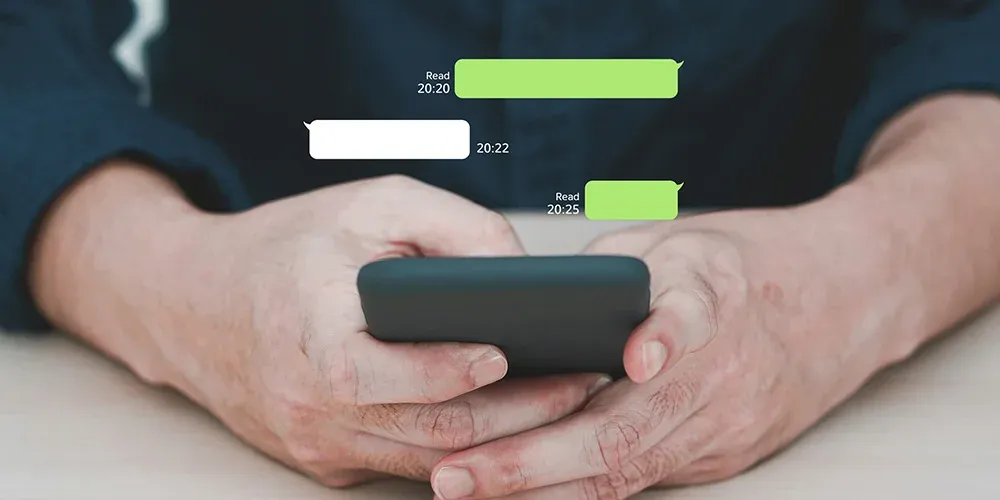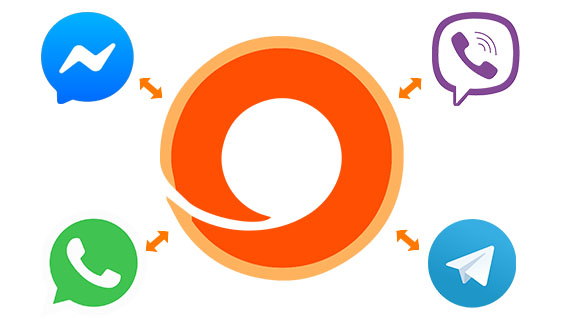Buyer’s Guide for Business SMS
SMS text messaging is one of the most effective ways today for businesses to connect with customers. The growth of this marketing approach is propelled by the fact that the global use of mobile phones is surging—according to Tech Jury, current projections are that by 2023, 5.9 billion people worldwide will be reachable through SMS technology.
Text messaging allows businesses to reach consumers where they are, which is on their phones. Forbes calls SMS “the marketing tool of the future.” Yet, only 39% of businesses use text messaging in their marketing outreach. Perhaps the reason is that many marketers don’t yet understand how extraordinarily effective SMS texting can be in connecting businesses with current and potential customers.
-
Why SMS Marketing is Effective
-
Two Approaches to SMS: Short Codes and 10DLC
-
Short codes and A2P 10DLC work together
-
SMS Marketing Best Practices
-
Opt-in and Opt-out Requirements
-
Why You Need a Good SMS Marketing App
Why SMS Marketing is Effective
Why is SMS text messaging so effective as a business communications strategy? Let’s take a look at some of the reasons:
- People pay attention when a text message comes to their phone.
Phones usually give an audible notification when a text message is received, and most people react by immediately checking to see what the message is. Tech Jury also reports that 60% of consumers read an incoming text message within five minutes of its arrival.
- People open and respond to their text messages.
According to Gartner, consumers open 98% of the text messages they receive and respond to 45% of them. And that response happens quickly: within, on average, two minutes or less.
The Tech Jury article notes that at 9.18%, the text messaging click-through rate (CTR) is higher than for any other digital marketing channel. (The average CTR for email, for example, is only 2.62%).
- Most consumers like communicating with businesses via text messages.
Believe it or not, according to Findstack not only do 75% of customers say they don’t mind receiving texts from businesses (provided they’ve opted in), but 64% of them want businesses to text them more often!
- A major advantage of SMS marketing is its cost-effectiveness.
As an article at business.com explains:
“Text message marketing can be a highly cost-effective marketing method. This is because the only costs associated with this marketing method involve using a text message service… When compared to other types of marketing, this makes text message marketing an inexpensive alternative that yields great results.”
- SMS complements other marketing channels.
Although SMS texting works great as a stand-alone marketing strategy, its value can be multiplied by combining it with other approaches. For example, you might use a relatively short SMS message to alert customers to a special promotion explained more fully in an email, on a social media page, or on your website.
Related: Does Texting for Business Marketing Actually Work?
Two Approaches to SMS: Short Codes and 10DLC


One reason SMS messaging continues to be effective is that it hasn’t yet been overrun with spam as alternatives such as email and phone calls have. (Almost 85% of all emails are spam). But bad actors aren’t overlooking SMS: text message spam has increased to the point where U.S. telecom carriers felt compelled to respond. They did so by implementing two major changes: the elimination of shared short codes and the adoption of A2P 10DLC.
Short Codes
Businesses have for some time used short codes to implement automated, bulk, A2P (Application-to-Person) SMS marketing campaigns. Consumers are asked to contact the business by texting a keyword to a specified 5- or 6-digit number (e.g., “Text LUNCH to 12345”). SMS texting with short codes is reliable and efficient. However, because leasing a short code number is expensive, in the past, a single number was often shared between many businesses. Because that practice allowed spammers to remain anonymous effectively, U.S. telecom carriers now forbid the sharing of short code numbers.
Benefits of Short Codes
Short code texting offers several distinct benefits. For example, short codes (being short) are easy for customers to remember, which makes them perfect for marketing and promotional outreaches. A high volume of messages (up to 1500 per second) can be sent, and the rate at which those messages reach the intended recipients is also high.
Obtaining a Short Code Number
Short codes are leased through the U.S. Short Code Registry, a federally regulated service administered by the Cellular Telecommunications Industry Association (CTIA). The Short Code Registry maintains the official database of available, reserved, and registered short code numbers.
There are two types of short codes: random and vanity. Random codes are just that—a random sequence of five or six numerals. A vanity short code number is one you select yourself. As might be expected, it’s more expensive to lease a vanity short code (about $1000 per month) than a random code (about $500 per month).
A2P 10DLC
The second element of the industry’s anti-spam strategy is A2P 10DLC. The Campaign Registry (TCR), which is the industry’s official registration authority, explains the purpose of A2P 10DLC this way:
An environment with a high volume of SPAM messages is bad for End Customers, Brands, and the mobile industry. To answer this market need, U.S.-based carriers have begun launching A2P 10 Digit Long Code (10DLC) services. 10DLC is a sanctioned service that provides visibility into message sources and content and offers new benefits to message senders.
A2P 10DLC Registration
A2P 10DLC allows businesses to text-enable traditional telephone numbers (e.g. 723-123-4567) and use them for SMS messaging and voice. 10DLC numbers must be registered with TCR before any messages are sent. There are two parts to that registration:
- Brand registration associates your business’s corporate profile (name, address, tax number, etc.) with a specific, unique brand name. You need to do this only once.
- Campaign registration lists all the campaigns you intend to run. Each campaign specifies the type of text messages (promotional messages, two-factor authentication codes, fraud alerts, etc.) that will be sent.
Registration helps carriers minimize spam by identifying who is using their texting facilities and for what purposes. Carriers classify all text messages sent using a software application as A2P, and any A2P messages sent from an unregistered phone number will be blocked.
TCR uses your registration information to generate a brand score, or trust rating, for your business. Based on your brand score and the type of campaign, each campaign will be assigned a maximum limit on the rate at which it can send messages. That limit may range from 1 to about 60 message segments per second (MPS).
Although carriers may charge several one-time and monthly fees for 10DLC, overall costs will usually be far smaller than those associated with dedicated small codes.
Unique Benefits of 10DLC
The fact that 10DLC numbers look like (and can function as) traditional phone numbers can be a great advantage. You can, for example, use a 10DLC number with a local area code to enhance consumer trust and engagement. In fact, if you have an existing phone number that customers already associate with your business, you can text-enable it as a 10DLC number while also continuing to use it for voice calls.
Related: What 10DLC Is and How It’s Important to Mass Texting
Short codes and A2P 10DLC work together


10DLC numbers are not intended to replace short codes, but rather to complement them. Either approach can be employed for practically any use case, but each is best suited for particular types of outreach.
Short code use cases
Short codes are often used for one-way mass marketing campaigns for a wide audience. Typical short code use cases include:
- Marketing and promotional messages include announcements of new products, special offers, contests, special events, etc.
- Alerts warn people about urgent issues such as dangerous weather or road conditions, flooding, wildfires, etc.
- Multiple choice surveys and polls such as, “How likely are you to recommend our brand to a friend, on a scale of 0 (not at all) to 10 (extremely likely)?”
- Company news concerning significant events such as job postings.
10DLC use cases
While 10DLC can be used for mass marketing, it’s especially useful for personal, interactive customer service applications. 10DLC is best suited to personalized, one-on-one, two-way interactions with individuals or relatively small groups of recipients. Such use cases include:
- Customer service notifications include order updates and confirmations, appointment reminders, sign-in verification codes, etc.
- Celebratory messages for birthdays, anniversaries, and other special events.
- Fraud alerts pertaining to a customer’s account
- In-depth surveys, polls, and reviews that aim to elicit detailed or conversational responses.
SMS Marketing Best Practices


Here’s a short list of best practices to make your SMS texting more effective.
- Keep your messages short. Perhaps you’ve heard of the internet abbreviation, tl:dr—”too long, didn’t read.” You don’t want that to happen to your texts!
- Send your messages at appropriate times. People typically attend to text messages when they arrive on their phones. You don’t want that to be at 3 am.
- Don’t send too many messages. If you inundate people with messages, recipients will soon consider them spam.
- Deliver what you promised. If recipients don’t think your messages provide value, they’ll ignore them.
DON’T USE ALL CAPS! That’s perceived as shouting, and it’s harder to read as well.
Opt-in and Opt-out Requirements


What is spam? To consumers, it’s essentially any communication they receive that they don’t want. That’s the thought behind one of the most basic rules governing the use of SMS text messaging.
The U.S. Telephone Consumer Protection Act, or TCPA, sets out a stringent requirement to which every business that sends text messages to consumers must adhere—before you send a text message to anyone’s phone, you must have their permission to do so. In other words, consumers must deliberately opt into receiving messages before you are allowed to send them.
Violations of this requirement can cost you up to $500 per text message, and for willful violations, up to $1500 per offense. Plus, you risk consumer class-action lawsuits. Since there’s no cap on the damages you might be assessed, failing to meet TCPA opt-in/opt-out requirements could cost your business millions of dollars.
So, what are those requirements?
For our purposes, there are two types of business text messages: promotional (marketing) messages and informational messages such as appointment reminders and shipping notifications. Informational messages require express consent while marketing messages require express written consent. According to one law firm, express consent is given “when a consumer knowingly provides a phone number to a business.” By supplying that number the consumer is implicitly authorizing the business to use it to contact them.
The standard for express written consent is higher. There must be a written agreement in which the consumer “clearly authorizes the caller to deliver to the receiver advertisements or telemarketing messages using an automatic telephone dialing system.” The agreement is validated by the consumer’s signature in written, electronic, or digital form.
The fundamental requirement is that consumers be told upfront exactly what they are authorizing. Any opt-in checkboxes on forms where consent is solicited must not be checked by default, and opting out must be straightforward.
See the opt-in/opt-out guidelines in the CTIA’s Messaging Principles and Best Practices document for more in-depth information. By faithfully following those guidelines, you can ensure that you comply with TCPA regulations.
Why You Need a Good SMS Marketing App


SMS texting has unique advantages as a marketing channel. Because people like getting appropriate business texts on their phones, they read and respond to them at high rates.
The key to taking full advantage of the benefits SMS texting can provide is to use a software solution that combines mass text messaging and personalized two-way texting at scale. Such a dedicated SMS texting platform can be the basis of a highly effective marketing strategy that, by combining the benefits of both short code and 10DLC text messaging, allows a business to connect with customers on a personal level, both en masse and individually.
If you’d like to see how TrueDialog’s unique platform can transform your SMS marketing outreach, please contact us today to schedule a demo.
Take your marketing to the next level
Ready to get started?Schedule a Demo
Quick Links
Business SMS
SMS API Integration SMS for Business Communications Enterprise Texting Services Business SMS Support Mass SMS Solutions Short Code TextingSMS Marketing
SMS Marketing Platforms SMS Marketing Services Interactive SMS Services Alternative SMS Platforms Short Code SMS Solutions Short Code Messaging ComplianceTrueDialog powers Enterprise-Grade SMS Business Text Messaging for revenue teams to drive engagement across the customer lifecycle, and at scale. Founded in 2008, TrueDialog is a Communications-Platform-as-a-Service (CPaaS) company serving over 2,000 customers in North America that continues to innovate its messaging platform to ensure its leadership position in the industry. The technology is cloud-based and API-centric, powered by an ISO 9001 database and direct carrier connections to deliver 99.9% uptime. Customers use TrueDialog for text message marketing, mass text messaging campaigns, customer service text messaging, and employee communication.
TERMS OF USE | PRIVACY POLICY | WEB ACCESSIBILITY | © COPYRIGHT TRUEDIALOG
 Salesforce
Salesforce




